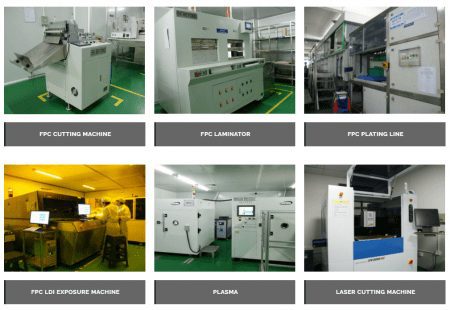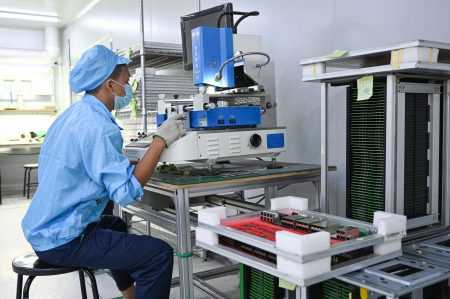- +86-755-23012705
- Building 3, Jinfeng Industrial Park, Fuyong Street, Baoan District, Shenzhen ,China
- [email protected]
In today’s competitive market, speed is critical. Whether you’re developing a new consumer gadget, a wearable device, or an industrial application, the ability to quickly turn a PCB design into a working prototype can make or break your product’s success. Quick-turnaround prototyping has become an essential service for companies that need to test, refine, and validate their designs faster, helping them accelerate time-to-market and stay ahead of the competition.
In this blog, we’ll explore the importance of quick-turnaround PCB prototyping, how it works, and the benefits it brings to product development processes.
Quick-turnaround prototyping refers to the process of creating a functional PCB prototype in a shortened timeframe, often in as little as 24 to 48 hours, depending on the complexity of the design and the capabilities of the manufacturer. The goal is to rapidly manufacture a prototype that can be tested and evaluated before committing to large-scale production. Quick-turnaround prototyping is a crucial part of the design validation process, allowing engineers and designers to catch potential issues early, make design adjustments, and fine-tune their products before mass production begins.
This process typically involves the rapid fabrication and assembly of a single-layer, multilayer, or HDI (High-Density Interconnect) PCB, depending on the design requirements. The quick-turnaround service often includes assembly and testing of the prototype, ensuring it functions as expected before finalizing the design for full-scale production.
Accelerates Time-to-Market The faster a product can go from concept to prototype, the quicker it can reach the market. By utilizing quick-turnaround PCB prototyping, businesses can reduce product development cycles, enabling faster iterations and refinements. This is particularly crucial for industries such as consumer electronics, medical devices, and automotive, where time-to-market is a critical competitive advantage. The sooner you can get feedback from a real prototype, the sooner you can launch the product or make necessary changes before production.
Early Design Validation One of the key benefits of prototyping is the ability to validate your design early in the process. Engineers and designers can check for errors in component placement, signal integrity issues, or thermal management problems that might not be obvious during the initial design phase. With a working prototype, you can perform functional tests, ensuring the PCB performs as expected in a real-world application. Catching design flaws early saves both time and money, preventing costly changes or rework later in the production cycle.
Cost Efficiency While prototyping is an investment, quick-turnaround prototyping can help identify design issues early, reducing the likelihood of expensive revisions during mass production. This cost efficiency also extends to the overall production process, as refined designs are less likely to result in scrap, rework, or production delays. Additionally, many PCB manufacturers offer rapid prototyping at competitive prices, making it an affordable solution for small batches or limited-run products.
Enables Multiple Design Iterations With the fast-paced nature of technology development, iterative design is often necessary. Quick-turnaround prototyping allows designers to rapidly test different iterations of a PCB design. You can test different materials, component layouts, or circuit configurations without waiting weeks or months for a new prototype. This flexibility supports innovation and fine-tuning, helping engineers find the optimal solution for their project.
Increases Design Confidence Testing a physical prototype offers invaluable insights into how a design will perform in real-world conditions. By performing electrical testing, thermal analysis, and stress testing, designers can ensure that the prototype meets performance requirements and is reliable in the target environment. This increased confidence helps stakeholders move forward with production plans, knowing that the design has been thoroughly tested and refined.

The process of creating a quick-turnaround PCB prototype typically follows these key steps:
The process begins with the submission of the design files. These are typically in the form of Gerber files, which include all the details about the PCB’s layout, component placement, and electrical connections. Designers may also submit a BOM (Bill of Materials) for the components to be used in the prototype.
After receiving the design files, the manufacturer reviews them to ensure that they meet the requirements for a quick-turnaround prototype. This review may include checks for design errors, component availability, and manufacturing feasibility. If any issues are found, the manufacturer communicates with the designer to resolve them quickly.
Once the design is confirmed, the PCB fabrication process begins. Modern PCB manufacturing technologies, such as laser drilling and automated circuit routing, allow manufacturers to produce high-quality PCBs at fast speeds. For quick-turnaround prototyping, many manufacturers use automated machinery to reduce cycle times and increase throughput. The PCB is produced using the chosen substrate (such as FR4, flexible materials, or high-frequency laminates) and the necessary components are mounted.
After fabrication, the PCB goes through the assembly process, where components are soldered onto the board. This process can be done using Surface Mount Technology (SMT) or Through-Hole Technology (THT), depending on the design requirements. Some quick-turnaround prototyping services offer turnkey assembly, which includes sourcing components and managing the assembly process in-house.
After assembly, the prototype is tested to ensure that it functions as expected. Common testing methods include functional testing, In-Circuit Testing (ICT), Automated Optical Inspection (AOI), and X-ray inspection (for more complex designs, such as BGAs). These tests identify potential issues like short circuits, poor solder joints, or component misplacements. Any defects found are addressed before moving forward with the next steps.
Once testing is completed and the prototype is validated, the final product is packaged and delivered to the customer, often within just a few days. This quick turnaround ensures that designers can begin their next iteration or final product design without delays.
To make the most out of quick-turnaround prototyping, here are some best practices:
Clear Design Files: Ensure that the design files are accurate and complete, as errors or missing details can delay the process.
Component Availability: Use commonly available components to reduce sourcing delays. If specialized parts are required, ensure they are in stock.
Work with an Experienced Manufacturer: Choose a PCB manufacturer with expertise in rapid prototyping. A provider with advanced equipment and efficient processes will ensure faster lead times.
Plan for Multiple Iterations: Expect to make design adjustments after testing. Quick-turnaround prototyping allows for multiple iterations, so plan for at least one or two rounds of prototyping to ensure optimal performance.

Quick-turnaround prototyping is a vital tool for designers and engineers who need to get their PCB designs to market faster. By enabling rapid validation, early error detection, and design refinement, quick-turnaround prototyping can significantly reduce time-to-market, improve product quality, and ensure a smoother transition to mass production. With the right manufacturing partner, companies can achieve faster product development cycles, reduce costs, and stay competitive in today’s fast-paced technology landscape. Whether you’re working on the latest smartphone, medical device, or industrial application, quick-turnaround prototyping is an essential part of the journey to success.
Simplify Your PCB Journey with XPCB Limited
XPCB Limited simplifies the PCB process for you. With our quick-turnaround prototyping and turnkey PCBA services, we ensure that your projects move forward smoothly and efficiently. Trust our commitment to quality and timeliness as we help you bring your designs to life. Choose XPCB Limited for a hassle-free PCB experience.






XPCB Limited is a premium PCB & PCBA manufacturer based in China.
We specialize in multilayer flexible circuits, rigid-flex PCB, HDI PCB, and Rogers PCB.
Quick-turn PCB prototyping is our specialty. Demanding project is our advantage.
Tel : +86-136-3163-3671
Fax : +86-755-2301 2705
Email : [email protected]
© 2024 - XPCB Limited All Right Reserve
